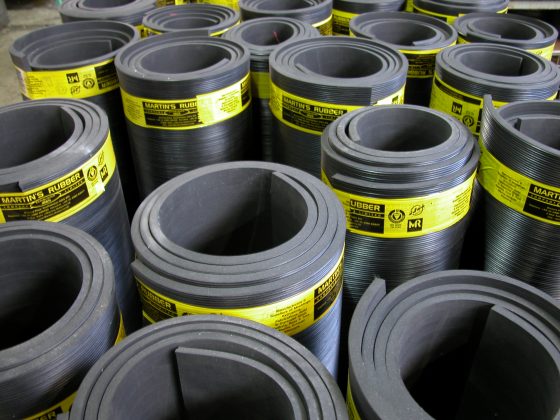What is Viton Rubber?
Posted on 10/05/2016 Category: General Martins Rubber blog, O-Rings, Rubber gaskets

Even in the harshest environments, subjected to temperature extremes and harsh chemicals, Viton® fluoroelastomers perform exceptionally well. With that in mind, this rugged rubber is ideally suited for applications requiring hard-wearing O-rings, rubber gaskets, and rubber seals. Viton rubber might just be the most durable and high-performance rubber material that you’ve never heard of. Here, Martin’s Rubber gives the full lowdown on this impressively versatile fluoroelastomer.
What is Viton material?
Viton® is a brand name of DuPont used for this synthetic rubber and fluoropolymer elastomer, commonly used in O-rings and other rubber-moulded or extruded products. This family of elastomers comprises copolymers of terpolymers of tetrafluoroethylene (TFE), hexafluoropropylene (HFP), vinylidene fluoride (VDF or VF2), vinylidene fluoride (VDF), and hexafluoropropylene (HFP), as well as perfluoromethylvinylether (PMVE) containing specialty polymers.
DuPont were the first to really market this family of materials, so Viton® has become the most commonly associated name with this fluoropolymer family. There are four families of Viton® polymers, and the fluorine content of these most popular Viton rubber grades varies between 66 and 70%. The main grades are A (Dipolymers of VF2/HFP), which has a fluorine content of 66%; B (Terpolymers of VF2/HFP/TFE), which is commonly used for seals or gaskets and contains 68% fluorine; F (Terpolymers of VF2/HFP/TFE), which is used in oxygenated automotive fuels and has 70% fluorine content; and finally specialty types (such as GLT, GBLT, GFLT, & Viton® Extreme), which are used in automotive and oil exploration applications.
The advantages of Viton
Compared to most other elastomers, Viton rubber is better able to withstand high temperatures while retaining good mechanical properties. Oil and chemical resistance are also essentially unaffected by elevated temperatures. Compounds of Viton rubber remain substantially elastic when exposed to laboratory air oven ageing up to 204°C or to intermittent exposures up to 316°C. Viton® grades also resist degradation from a wider variety of chemicals and fluids—including oils, fuels, lubricants, and most mineral acids—than any other non-fluorinated elastomer. In layman’s terms, that means it provides the best fluid resistance of any commercial rubber.
With its low permeability to such a broad range of substances, Viton rubber delivers excellent performance in oxygenated automotive fuels. However, the rugged characteristics of Viton rubber don’t stop there. It also displays good resistance to compression, even at temperatures that would make other non-fluorinated elastomers brittle. Viton rubber is also especially resistant to atmospheric oxidation, sun, climatic conditions, fungus, and mould. Furthermore, Viton® has good electrical properties (in low-voltage, low-frequency applications) and low burning characteristics.
What is Viton rubber used for?
Viton rubber is a durable material for mouldings, gaskets, and seals, which can be specified and manufactured here at Martin’s Rubber to your rubber design requirements. Viton® tubing is also commonly used in automotive and other transportation fuel applications involving high concentrations of biodiesel. Types B and F (FKM- GBL-S and FKM-GF-S) have been proven more resistant to acidic biodiesel because this fuel type is unstable and oxidising. There are many grades of Viton rubber, so it is still essential to understand the requirements of the application and ensure that the correct grade is used.
If you want to learn about Viton rubber, be sure to ask an expert here at Martins Rubber before you make your final choice of Viton®. Find out more about our Viton® products and other rubber engineering services by contacting us or emailing [email protected].


